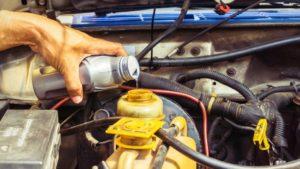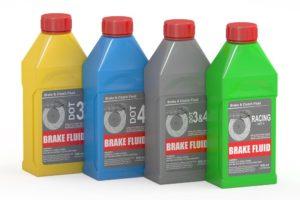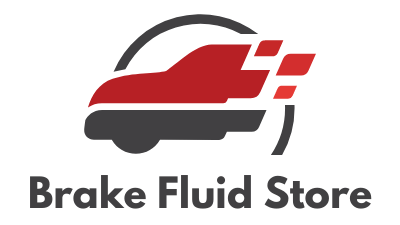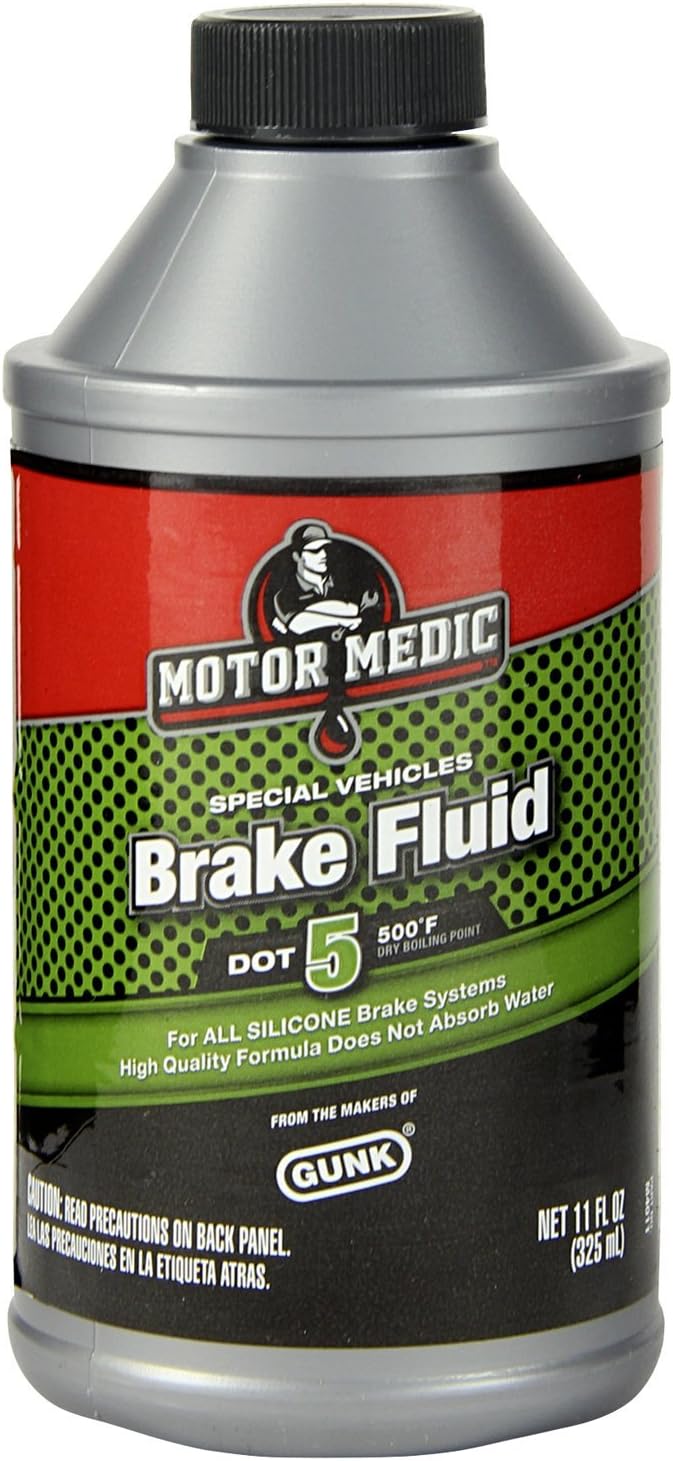Even drivers who meticulously maintain their vehicles can forget about brake fluid. Owners tend to overlook brake fluid when doing their own maintenance checks. Yet even though it has no mileage interval attached to it, brake fluid should be changed every few years. To keep your vehicle running optimally, we have compiled a list of the best brake fluid brand options out there.
Brake fluid is not used primarily as a lubricant; it is part of a hydraulic system. It doesn’t become dirty as fast as transmission fluid or motor oil, but it does get filthy. The dirt from daily use causes it to break down over time, thus reducing your braking system’s performance. Break down is accelerated if you are demanding on your brakes.
However, even if you are very gentle on your brakes, you need to replace the fluid occasionally.
Owners can obtain new braking fluid at the dealership or the manufacturer. However, this is not always cost-effective or convenient. If you want to save money, you can purchase brake fluid online. However, there are a few things to take into consideration.
Contents
- 1 How Does Brake Fluid Work?
- 2 Types of Brake Fluid
- 3 Things to Consider
- 4 Other Important Things to Note
- 5 Best Brake Fluid Brands
- 6 Best Overall Brake Fluid : ATE Original TYP 200
- 7 Honorable Mention: Bosch Brake Fluid
- 8 Best Brake Fluid: Motul RBF 600
- 9 Best Price Brake Fluid : Prestone Synthetic Brake Fluid
- 10 Best Price Brake Fluid Runner Up : Lucas Oil Synthetic Brake Fluid
- 11 Best Performance Brake Fluid : Castrol SRF Racing Brake Fluid
- 12 Best Brake Fluid for ABS System: Pentosin 1204116 Super DOT 4
- 13 Best Brake Fluid for Extremes in Temperatures: Niteo Motor Medic
- 14 Most Effective Brake Fluid : Mag 1 Premium Brake Fluid
- 15 Most Diverse Brake Fluid : Red Line RL-600
- 16 How Often Should Brake Fluid be Changed?
- 17 Can Different Brake Fluids be Mixed?
How Does Brake Fluid Work?

When you step on your brake pedal, the power brake system pushes brake fluid through the lines into the braking assemblies found behind each wheel. If your vehicle has disc brakes, the fluid pushes your pistons into the calipers, then out against the brake pads. The brake pads clamp down on your rotors.
If your car has drum brakes, the fluid causes your wheel cylinders to push against one end of your brake shoes. This pushes them against your brake drum. When the pedal is released, the fluid pressure in your brake calipers/wheel cylinders decreases as it returns into the lines.
The challenge with brake fluid is that it’s hygroscopic, meaning it absorbs moisture naturally from the air. This moisture eventually becomes water in your brake fluid. Water is the difference between wet and dry brake fluid.
Dry brake fluid is fresh and new. Brake fluid becomes wet when it obtains a volume of water equal to 3.7%. Since water has a lower boiling point than brake fluid, it reduces the boiling point of the brake fluid when it mixes in your brake lines.
This is the biggest risk to performance. While braking, vast amounts of heat go from your pads/shoes into your brake fluid. Traction control and anti-lock brake systems also generate heat, causing your brake fluid to boil.
When the fluid boils, vapor accumulates around your braking assemblies at your wheels. This significantly reduces braking performance. Boiling is what breaks down the fluid. It leads to a decline in performance and lowers the boiling point even more.
As your fluid ages and absorbs water, it reaches boiling faster, accelerating the rate of fluid deterioration. Therefore, you should change your brake fluid every two years to prevent a negative impact on performance.
Replacing the brake fluid improves performance. However, changing it isn’t as easy as an oil change. It must be drawn out of your system with a vacuum-based tool, which you can buy anywhere brake fluid is sold.
Benefits of Changing Brake Fluid
- Prevention of brake failure: If you don’t use the best brake fluid, the vehicle will not perform or operate as efficiently. It is an important component of the vehicle’s braking system and is required for stopping power.
- Increases performance: Good brake fluid provides a better stopping ability over lower-quality products. It makes your vehicle safer.
- Increases safety: If the fluid is worn or old, it will not work as efficiently. The car will take longer to stop and can potentially result in accidents.
- Lubricates moving parts: Brake fluid operates by lubricating the vehicle’s moving parts when it is in motion. The parts are made of metal which tends to rust and corrode over time if not properly cared for.
- Prevents vehicle from overheating: Each time the brakes are applied, heat is created around the brake system. Fluid is needed to neutralize the heat and prevent the engine from overheating.
- Decreases brake failure: Brake fluid is required to ensure brakes respond properly when used. Lack of this fluid leads to brake failure, which can be devastating to vehicles and passengers.
Types of Brake Fluid

DOT 3 is a poly glycol-based brake fluid used for vehicles that are exposed to normal driving conditions. Its wet boiling point is 284°F, and its dry boiling point is 401°F. Annually, it absorbs moisture at 2% of volume. It safely misses DOT 4 and DOT 5.1 brake fluids. DOT 3 brake fluid is strong and may damage a vehicle’s exterior paint if spilled.
DOT 4 is designed for use in higher altitudes and is another poly glycol-based brake fluid. Its wet boiling point is 311°F, and its dry boiling point is 446°F. Like DOT 3, the best DOT 4 brake fluid absorbs moisture at the same rate of 2% of the volume annually. However, its dry and wet boiling points are higher.
DOT 5 is synthetic brake fluid with a silicone base. It will not absorb moisture and can result in corrosion in the brake line if you don’t monitor it properly. The wet boiling point is 256°F, and the dry boiling point is 500°F. This brake fluid is for race cars or any performance-based vehicle. It shouldn’t be used for anti-lock brake systems or combined with other fluids.
DOT 5.1 is another poly glycol-based fluid. Like DOT 3 and DOT 4, it absorbs the same moisture per year. The dry boiling point is 500°F, and the wet boiling point is 256°F. It is for high-performance vehicles and race cars with anti-lock brake systems. You can mix it with DOT 3 and DOT 4 fluid.
Things to Consider
All brake fluid may look similar, but realistically, there are features that you need to examine before purchasing a product. These small details will affect your vehicle’s performance.
DOT Level
DOT level is the first thing that you should examine before buying any fluid. The DOT fluid level is not a matter of personal preference but is recommended by the manufacturer for the optimal performance of your vehicle. You must stay with that specification for your car to run properly. There should be no compromise.
The DOT fluid levels determine the temperatures that the vehicle can handle. For example, a DOT 3 will have a lower temperature for boiling point over a DOT 4. You can’t use it in high-temperature conditions.
Container Size
Pay attention to the container size to avoid spending excessive money on tiny containers that will quickly empty. Make sure you buy the amount required for the job.
Resistance of Water Absorption
Tubes and pipes in your brake system are porous because they are rubber. Over time, water penetrating your system is inevitable. It is an undesirable consequence since water dilutes your brake fluid, compromising performance.
There is a lower boiling point with water compared to brake fluid. It will steam quickly. If it does, the system becomes less responsive and performs below capacity.
Corrosion Level
Brake fluid must be non-corrosive. This is an important consideration when dealing with older cars with rubber seals. Spillage is common during maintenance. Brake fluid can damage paint jobs on contact. Non-corrosive brake fluid minimizes damage to the car.
Color
Not all fluids are the same color. Some companies add a bit of a tint to the product. This will help you distinguish between liquids if you are draining your system. The color can be pink, blue, or amber.
Viscosity
Your brake fluid should maintain viscosity independent of operating temperature. This will give proper traction control and stability. Ones that maintain viscosity ensure the ABS will optimally function. The viscosity levels should be the same ones recommended by your vehicle’s manufacturer.
Boiling Point
The boiling point is very important since it affects brake performance. Fluid with high boiling points works best in extreme temperatures where high-performance vehicles operate. Low boiling point fluids are best for passenger vehicles.
The boiling point affects your level of gas formation when brakes are functioning. The excessive formation may cause brake failure if it is not at the proper temperature level.
Compatibility with Other Fluids
Depending on the fluid, it may or may not be compatible with other fluids. Watch the manufacturer’s instructions to prevent mixing the wrong brake fluids. Brake fluids that are highly compatible with others can be used in various cars.
Other Important Things to Note
The brake system on a vehicle creates high temperatures. If it gets too high, the brake fluid heats up and may form vapor in your brake lines. This will decrease your stopping ability. If the same brake fluid has been in use for some time, the boiling point drops from water contamination.
A wet boiling point references the fluid that has been used for a bit and contains a set amount of moisture mixed in with the brake fluid.
Other things to consider include:
- Compatibility: Some fluids are intended for specific brake systems, like drum or disc brakes. Avoid buying cheap brake fluid to save money. It should be compatible with your model to operate efficiently and prevent brakes from failing.
- Viscosity: The brake fluid should maintain its viscosity in fluctuating operating temperatures to provide consistent traction control, stability control, and proper function of the anti-lock brake system. Use the manufacturer-recommended brake fluid.
- Resistance to corrosion: Search for products that repel corrosion regarding ABS control valves, wheel cylinders, master cylinders, and calipers. Manufacturers will use different additives to prevent corrosion. Since some fluids are more corrosive than others, it is important to use the correct brand. These work well in ABS systems but are good for rubberized.
- Ability to mix: Just like motor oils, different brands can mix with others. Being able to mix different products indicates that the oil doesn’t need draining before topping. Additionally, the brakes become more responsive.
- Color: Brake fluid comes in blue or pink. This improves visibility while draining the brake system.
- Resistance to water: This is important as water can cause brake pedals to be spongy. It may also cause the system to become less responsive.
Best Brake Fluid Brands
In determining which brand of fluid to use, always consult the owner’s manual before making a purchase. You want to ensure that it is the best brand for your vehicle and that it won’t cause any damage. Also, avoid spilling any brake fluid on your paint as it will ruin it.
Best Overall Brake Fluid : ATE Original TYP 200
While racing brake fluid may not be necessary for daily use, if you are a heavy brake user or the vehicle ever goes on the track, you may want to invest in this fluid. It will give you increased performance with longer drain intervals.
Pros:
- Dry boiling point is 996°F and wet is 737°F
- Will withstand heavy use
- DOT 4 compliant
Cons:
- Needs to be bled after two years
- Blue tint is now amber
- Is not compatible with other fluids
Honorable Mention: Bosch Brake Fluid
Bosch has created an excellent brake fluid due to its ultra-compatibility to most vehicles. It is easy to find. Its lubricity is superior and exceeds DOT standards. You can use it with DOT 3, DOT 4, or DOT 5.1 fluids.
Pros:
- Long change interval (three years)
- Wet boiling point is 365°F
- Combined low viscosity with high wet boiling points
- Prevents wear of brake system components
Cons:
- May turn milky in master cylinder
Best Brake Fluid: Motul RBF 600
This line focuses on high performance for motorcycle or automotive use. RBF 600 is a racing brake fluid due to its high boiling point when dry. The wet boiling point is impressive and ensures the vehicle’s safety while operating in wet conditions.
Pros:
- Dry boiling point is 593°F and wet is 420°F
- Sealed with nitrogen to prevent air contamination
- Improved aerodynamic performance
- Non-silicone synthetic fluid
Cons:
- Not a racing fluid, but good for sporty cars
- Small bottle size
Best Price Brake Fluid : Prestone Synthetic Brake Fluid
This brake fluid is for vehicles requiring DOT 3 or DOT 4. It is one of the best prices for quality brake fluid. While you may need to purchase the grade designed for your model, the availability of both versions of this brake fluid makes it a great option.
Pros:
- DOT 3 dry boiling point 460°F and wet is 284°F
- DOT 4 dry boiling point is 510°F and wet is 311°F
- Good improvement on performance over standard fluids when newer
Cons:
- As fluid ages, it loses heat-handling ability
- Lower boiling point
Best Price Brake Fluid Runner Up : Lucas Oil Synthetic Brake Fluid
This affordable product is compatible with almost all brake fluids and is easy to use. It works well for drum, clutch, and disc systems and is made with polyethylene glycol and additional additives. It is a high-quality fluid and meets safety standards.
It prevents the seal found on the braking system from softening or hardening and lubricates your vehicle’s parts for optimal performance.
Pros:
- Protects against corrosion and rust
- Dry boiling point of 446°F and wet is 338°F
- Lubricates system
Cons:
- Can’t be used for high-performance cars
- May contain harmful ingredients
Best Performance Brake Fluid : Castrol SRF Racing Brake Fluid
Castrol offers a synthetic brake fluid with high-performance options. It replaces DOT 4 and DOT 3 brake fluids, but it has higher levels of boiling protection. It was created for high performance and protects well over the toughest racing forms. It will additionally work in a work truck or daily driver.
Pros:
- Superior protection against boiling while under stress
- Stands up to contaminants
- New boiling point of 590°F with a wet point of 3.7% water by volume
Cons:
- May pay more for performance that isn’t necessary
Best Brake Fluid for ABS System: Pentosin 1204116 Super DOT 4
Pentosin is formulated and designed to be used in an ABS. It is high-quality brake fluid and effectively resists corrosion. It can fight against water retention and causes the fluid to last longer. This fluid is reliable in various high-performance formats.
Pros:
- Corrosion-resistant
- Repels water
- Can be used on all DOT 4 models
Cons:
- May not be properly sealed
Best Brake Fluid for Extremes in Temperatures: Niteo Motor Medic
This product is different. It can withstand braking performance for long intervals regardless of temperature. It is gentle and will not damage the paint on your vehicle. This DOT 5 brake fluid guarantees high-quality performance.
Pros:
- Has a silicone formula
- Boiling point is 500°F
Cons:
- Doesn’t absorb moisture as readily
Most Effective Brake Fluid : Mag 1 Premium Brake Fluid
This brake fluid is great if you are on a budget. It offers the properties found in high-grade brake fluids and has a smooth braking performance. You can use it on multiple vehicles and different models of cars.
Pros:
- Wet boiling point is 293°F and dry is 492°F
- DOT 3 class
- Suitable for everyday cars
Cons:
- Unable to use in high-performance vehicles performing in extreme temperatures due to low boiling points
- Harmful synthetic ingredients
Most Diverse Brake Fluid : Red Line RL-600
Redline has produced a high-quality brake fluid that encourages a highly responsive and smooth brake performance. This multi-purpose fluid is perfect for high-performance cars on passenger vehicles, motorcycles, and race cars. Additionally, high boiling points enable it to withstand high operating temperatures.
Pros:
- Prevents premature rusting and corrosion
- Lubricates car while operating
- Reduces water absorption and retention
- Minimizes vapor lock and brake fade
Cons:
- Contains harmful substances
How Often Should Brake Fluid be Changed?
Check your owner’s manual first as it has a schedule based on mileage or time to determine change intervals. The general recommendation is every two years.
Can Different Brake Fluids be Mixed?
You can mix glycol-based brake fluids with different (higher) DOT levels, and you can mix silicone with other silicone-based fluids. However, if you mix the two, it will damage the brakes.
Using the best brake fluid possible will generate an optimal performance for your brake system. Water will, eventually, enter your brakes and cause them to become spongy and not as responsive. Therefore, the brake fluid needs to be changed every few years.
There are many factors to consider when purchasing the best brake fluid for your vehicle. You need to know which DOT the model of your vehicle requires, as well as temperature and viscosity. Temperature is important as it indicates what temperatures it will work optimally in.
To find this information, consult the owner’s manual. It will also indicate how and when you should change the brake fluid. Always be sure to follow the instructions precisely. If you don’t, it can have disastrous consequences for the vehicle and potentially the passengers as well.
Finally, depending on the age of your car, you may want to consider corrosion and rust as well. You do not want your brake system negatively affected, but because the parts are metal, they are prone to rust and corrode over time.











3 thoughts on “Best Brake Fluid Brand Currently on the Market – Get the Ultimate Stopping Power”
Comments are closed.